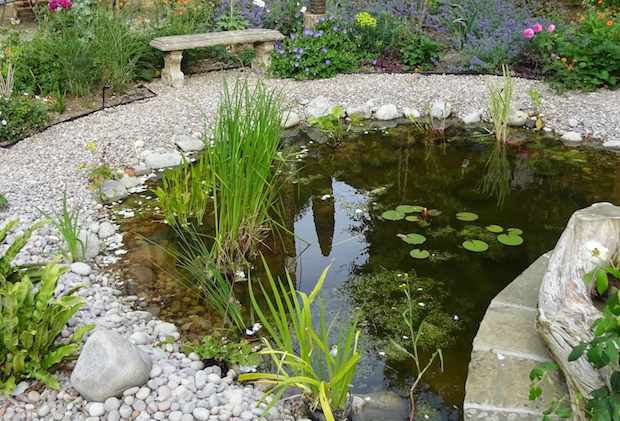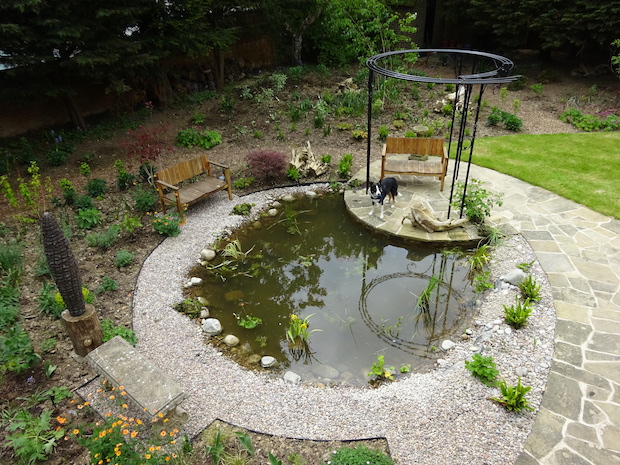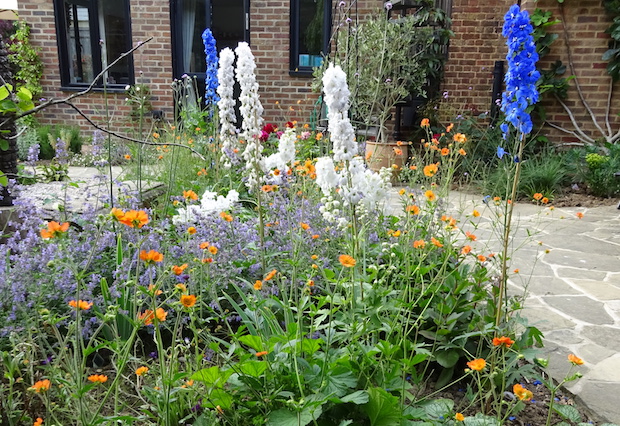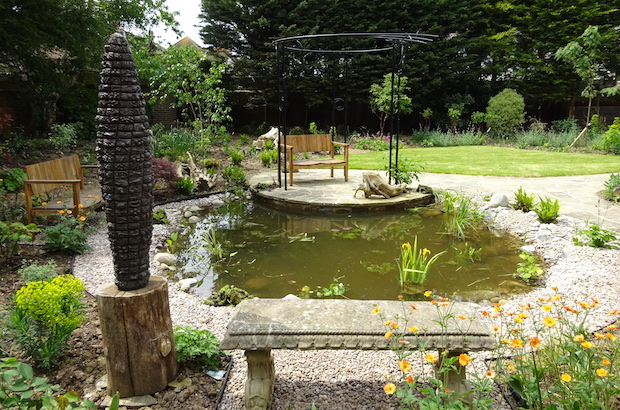repurposing stonework and encouraging wildlife
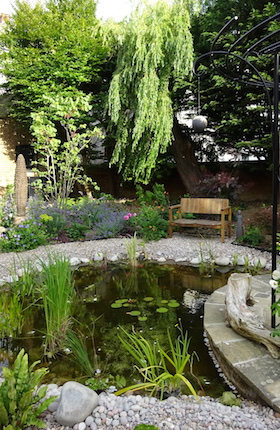
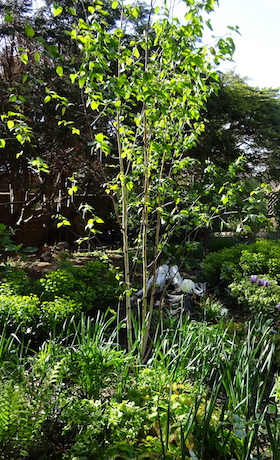 I designed this wildlife garden in Worthing, West Sussex. The brief was to introduce vertical interest within an empty ‘L’ shaped garden. The clients love Monet’s Giverny garden and they wished the design to include a sense of this garden’s opulent planting and water.
I designed this wildlife garden in Worthing, West Sussex. The brief was to introduce vertical interest within an empty ‘L’ shaped garden. The clients love Monet’s Giverny garden and they wished the design to include a sense of this garden’s opulent planting and water.
Trees dominate the boundary, and provide an essential shelter belt to filter the strong coastal winds. The salt laden wind drives into the garden from the beach a block away. A long leylandii screen had to stay, as it protects the space from the strong weather conditions.
To break the evergreen monotony I planted multi stemmed deciduous feature trees to create interior structure and offer more seasonal interest. Generously planted shrub borders under the tree canopy support the bird visitors. Colourful pollinator plants give colour and attract insects and birds to this wildlife garden.
Recycle the crazy paving: keep natural resources on site!
The team cleaned sixty square metres of York stone crazy paving found on site. Why send natural stone to landfill? I believe it is part of a designers duty to reuse quality materials found on site if appropriate to the design.
The new layout repurposes this natural paving material. I designed bold curved paths that give new direction to three new patio areas.
A naturalistic pond is the focal point in this wildlife garden. Next to it a small landing patio breaks the pond edge. Clients can sit on the pond side and dip their feet in the pond! A weeping willow tree on the garden boundary can be viewed from across the pond surface, just like in Monet’s Giverny garden!
Blacksmith Belinda Ferretter was invited to the wildlife garden. She created a bespoke metal arbour feature. This supports scented roses and the circular top frames the sky when viewed from beneath.
The arbour creates wonderful geometric reflections on the surface of the wildlife pond. All corners of the garden can be viewed from this location.

